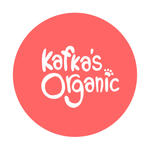5 things to consider when selecting your kibble

Dry pet food can sometimes be the equivalent of grabbing a McDonalds for your pet….every day. There is an increased incidence of obesity, diabetes and kidney failure in cats and dogs today, and it is very likely due to the poor diets we feed our pets long-term. Here are some things to be aware of when selecting a dry pet food or kibble for your pet.

Ingredients
The main ingredients in most store-bought pet foods are animal byproducts, i.e ingredients that are not fit for human consumption. The parts used can come from injured, diseased, or dead animals [1]. The same reason these byproducts are not suitable for human consumption is why they are also not suitable for animal consumption: food safety. Byproducts are contaminated with bacteria and viruses, and are low quality in terms of nutrition. For example, salmonella contamination from byproducts is a major problem that pet food suppliers must combat, and they do so by using heat processing which comes with its own set of problems (discussed later).
Nutrition & Digestibility

According to Veterinarian T.J Dunn, DVM pets fed a strictly all-meat diet 30 years ago were coming in to his clinic with a condition dubbed “All Meat Dogs.” Due to being fed a popular canned meat diet, these dogs had hair loss, metabolic imbalances, and were emaciated and weak [2]. He describes how pet owners select all-meat or certain other diets in good faith, but how not all these protein sources are well adapted to an ominivorous dog. The digestibility of certain protein sources vary according to the ingredient, and whether it is cooked or not. Similarly, although cats are carnivores, their nutritional requirements are not met by a sole meat-based diet. For example, cats have a high requirement (36%) for healthy fats in their diet [3]. It’s therefore imperative that pet parents select high quality ingredient sources that are digestible and meet the entire nutrition profile for their pet.
Processing
Extrusion is the process by which most pet foods are sterilized and rendered stable. High temperatures not only kill bacteria, but also make essential amino acids, vitamins and fats sterile by changing their composition [4]. What’s left is not very nutritious, to say the least. High temperature extrusion also causes a reduction in protein quality and palatability of food. To compensate, many pet foods have additives that enhance the flavour and add back the nutrition that was lost [5].
Preservatives & Additives

The AAFCO lists 36 preservatives that are legally allowed to be in commercial pet foods, but are chemicals that we as pet owners would like to avoid [6]. For example, Butylated hydroxyl anisol (BHA), Butylated hydroxyltoluene (BHT), and Ethoxyquin have unknown toxic and carcinogenic properties because studies on them have been inconclusive [7]. Nobody is entirely sure if they are toxic in certain amounts or not. Often these preservatives are present in higher quantities, or may be unlabeled in pet food, making it unclear if we are feeding our pets high amounts of preservatives that build up in their system over time.
Sustainability
Sustainability is the ability of a community to ensure a better quality of life for everyone in that community, and the ability to maintain that standard long-term. It calls for “the need of the present to be met without compromising the ability of future generations to meet their needs.” The pet food industry, a $55 billion business, causes a major footprint in the ecosystem of our food because of the environmental cost of producing by-products, it’s tight link to the livestock industry, and the shipping process of ingredients over long distances [1]. Using locally-sourced, quality ingredients would circumvent this problem, and be more environmentally sustainable.
The fresh difference
Select a nutritionally balanced and species-appropriate food that is made with as many natural ingredients as possible. Feeding minimally-processed pet food is beneficial for your pets overall health because it naturally contains the vitamins, minerals and antioxidants present in whole food. Read the ingredient list carefully to avoid preservatives and additives. Happy feeding!

References
[1] K.S. Swanson, R.A. Carter, T.P. Yount, J. Aretz, P.R. Buff, Nutritional Sustainability of Pet Foods, Advances in Nutrition 4(2) (2013) 141-50.
[2] T.J. Dunn, Principles of Dog Nutrition <https://www.petmd.com/dog/nutrition/evr_dg_principles_of_dog_nutrition>, 2018).
[3] F. Salaun, G. Blanchard, L. Le Paih, F. Roberti, C. Niceron, Impact of macronutrient composition and palatability in wet diets on food selection in cats, Journal of animal physiology and animal nutrition 101(2) (2017) 320-328.
[4] Q.D. Tran, W.H. Hendriks, A.F.B. van der Poel, Effects of extrusion processing on nutrients in dry pet food, Journal of the Science of Food and Agriculture 88(9) (2008) 1487-1493.
[5] K. Koppel, M. Gibson, S. Alavi, G. Aldrich, The Effects of Cooking Process and Meat Inclusion on Pet Food Flavor and Texture Characteristics, Animals : an Open Access Journal from MDPI 4(2) (2014) 254-71.
[6] Association of.American Feed Control Officials, What is in Pet Food. <http://www.aafco.org/consumers/what-is-in-pet-food>, 2018).
[7] Berkley University of California.-. Wellness, <http://www.berkeleywellness.com/healthy-eating/food-safety/article/two-preservatives-avoid>, 2018).


Leave a comment